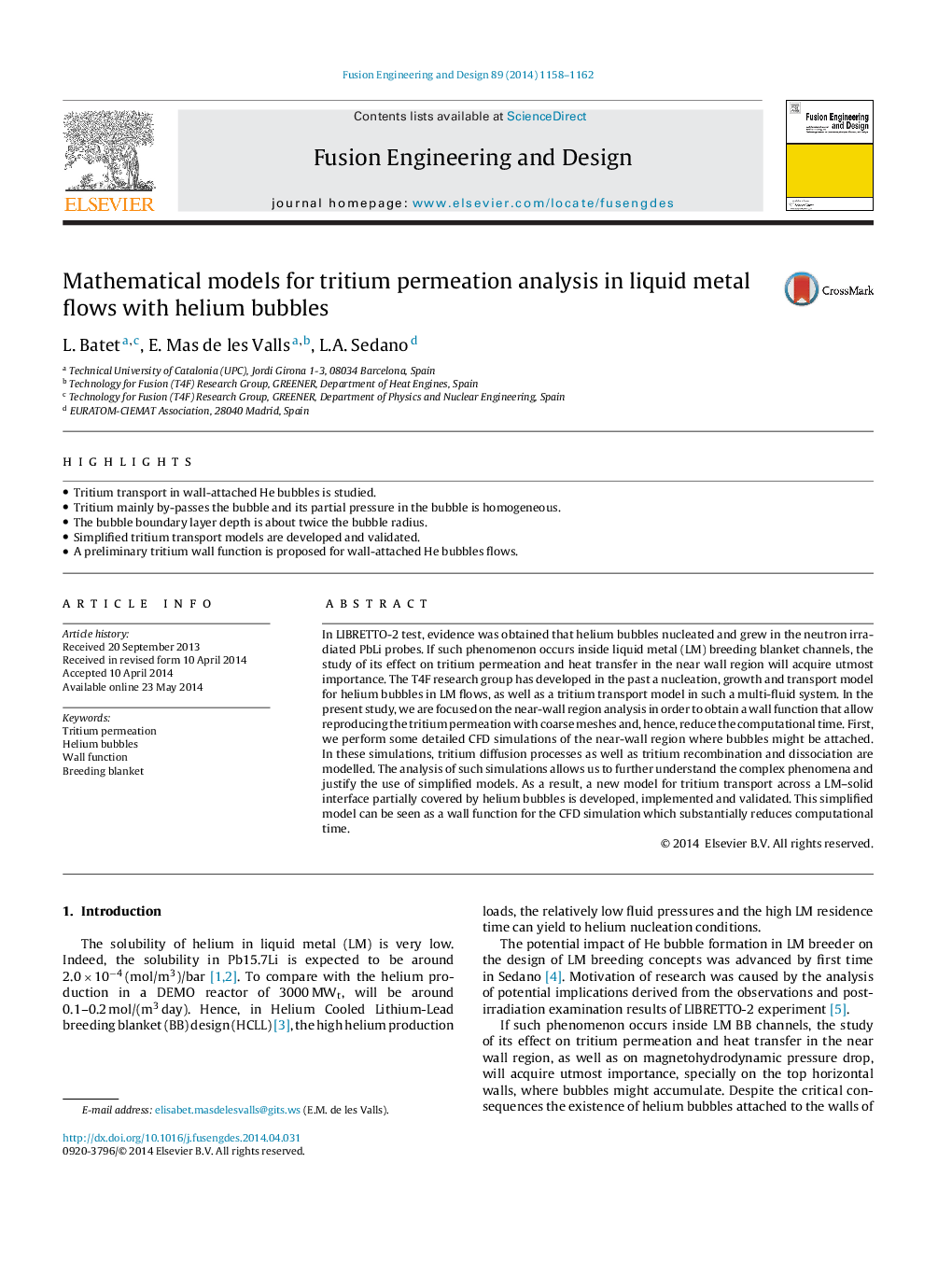| کد مقاله | کد نشریه | سال انتشار | مقاله انگلیسی | نسخه تمام متن |
|---|---|---|---|---|
| 271196 | 504990 | 2014 | 5 صفحه PDF | دانلود رایگان |
• Tritium transport in wall-attached He bubbles is studied.
• Tritium mainly by-passes the bubble and its partial pressure in the bubble is homogeneous.
• The bubble boundary layer depth is about twice the bubble radius.
• Simplified tritium transport models are developed and validated.
• A preliminary tritium wall function is proposed for wall-attached He bubbles flows.
In LIBRETTO-2 test, evidence was obtained that helium bubbles nucleated and grew in the neutron irradiated PbLi probes. If such phenomenon occurs inside liquid metal (LM) breeding blanket channels, the study of its effect on tritium permeation and heat transfer in the near wall region will acquire utmost importance. The T4F research group has developed in the past a nucleation, growth and transport model for helium bubbles in LM flows, as well as a tritium transport model in such a multi-fluid system. In the present study, we are focused on the near-wall region analysis in order to obtain a wall function that allow reproducing the tritium permeation with coarse meshes and, hence, reduce the computational time. First, we perform some detailed CFD simulations of the near-wall region where bubbles might be attached. In these simulations, tritium diffusion processes as well as tritium recombination and dissociation are modelled. The analysis of such simulations allows us to further understand the complex phenomena and justify the use of simplified models. As a result, a new model for tritium transport across a LM–solid interface partially covered by helium bubbles is developed, implemented and validated. This simplified model can be seen as a wall function for the CFD simulation which substantially reduces computational time.
Journal: Fusion Engineering and Design - Volume 89, Issues 7–8, October 2014, Pages 1158–1162
